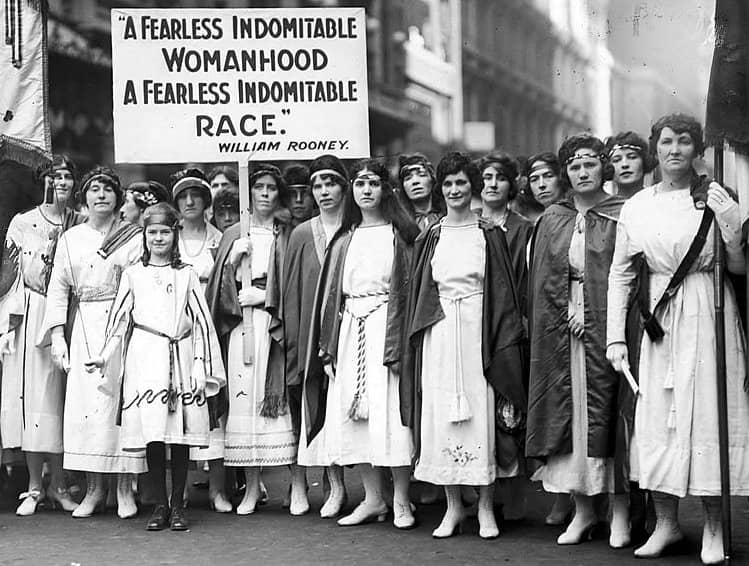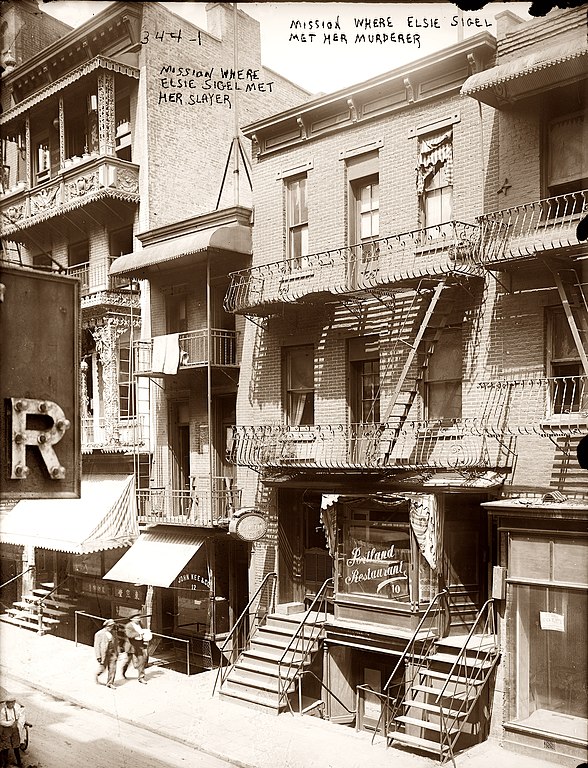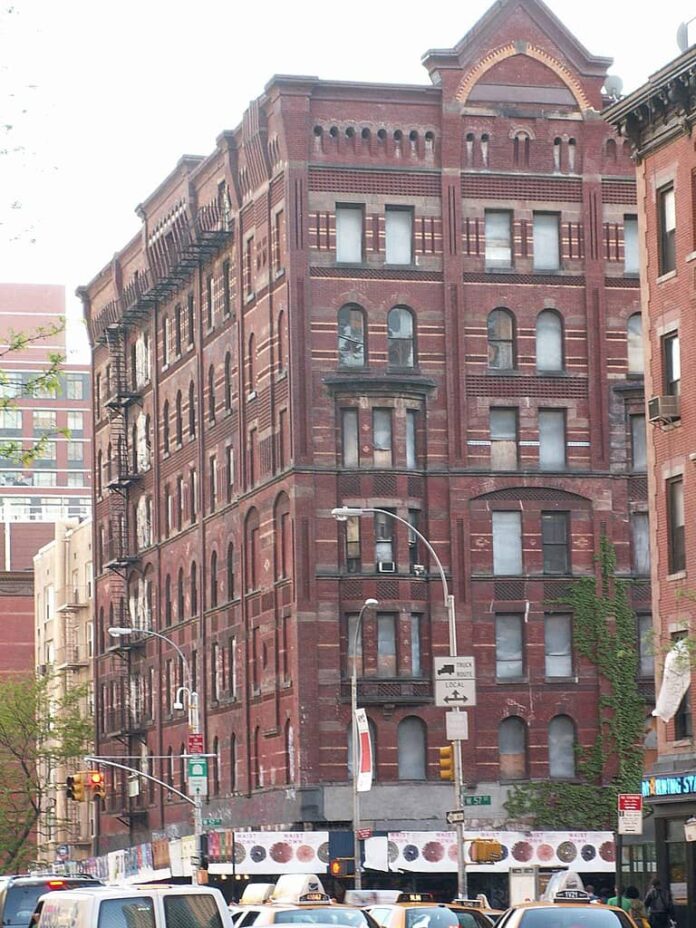When Hell’s Kitchen was met with an attempted renaming to “Clinton,” in the 1950’s, locals hoped to clean up the area’s reputation. But just as Hell’s Kitchen fought to keep the name you know and love, so has one of its most famous apartment buildings, the Windermere.
The Oldest Known Apartment Building in NYC
Located at 400 West 57th Street and erected in 1881, the Windermere is recognized oldest-known large apartment complex still remaining in NYC; Hell’s Kitchen itself was one of the first districts to hold apartment buildings. Since 2005, the Windermere has been landmark-preserved, yet there has been an extensive period of time where the complex was in varying stages of decline. It’s recently experienced a slow crawl back to life, in the form of a much-needed, and complete, renovation. When it’s complete, it will re-emerge as a mixed-use building for office space, retail space, and even 20 affordable housing units—sort of like a caterpillar inside its cocoon that will one day emerge as a butterfly.
The Early History Of The Windermere in Hell’s Kitchen
Rewind the clock to 1879, when NYC was still in the infant stages of building out its skyline, and opportunity was everywhere. The city was a businessman’s dream and drew in three particularly ambitious young men with big dreams of being land speculators and getting rich. These men were 24-year-old William E. Stewart, a clerk who still lived at home, 25-year-old William F. Burroughs, a builder, and 37-year-old Nathaniel McBride, a lawyer.
The men put their money together and bought the 12,500 ft² plot of land on the corner of 57th Street and 9th Avenue for $39,000. Then they hired architect Theophilus G. Smith to build a luxury apartment building for them which cost them another $350,000, and two years later, the result was the Windermere. The building was state-of-the-art, combining stylistic features of Queen Anne, High Victorian Gothic (polychromatic brick and horizontal banding), and Romanesque (round-arched windows and cornices) architectural designs. The English Lake Windermere may have been the inspiration for the building’s name.
The Windermere Opens
The building housed 39 luxury apartments with either five or six bedrooms each, and had eight stories and three wings with hydraulic elevators, liveried servants, and telephone service, a brand new amenity back then. Each apartment featured a marble fireplace, parquet floors, and hazelwood molding.
But being a time of major growth and competition, other large complexes were built. By 1884 the Chelsea Hotel and The Dakota opened, and in 1885 came the Osborne and the Central Park Apartments – all bigger, better, more luxurious buildings with even better amenities. The wealthy residents jumped ship, and suddenly Windermere was left mostly empty. The owners hired a new Superintendent, Henry Sterling Goodale, to run the place. He decided to try something different, having two daughters who were independent writers, he marketed apartments to a new group of exclusively women. He also decided to rent rooms, and let residents share a kitchen and a bathroom.
The “New Women” At The Windermere
At the time, there was demand from a new demographic that was emerging. They were called the “new women” because they were single and financially independent. Some of the women were divorced, which was practically unheard of back then, but many were just not married or ready to be. This was an exciting time for women in general because they were spreading their wings of independence for the first time. The women’s suffrage movements had begun, and women were trying to show they were just as smart and capable as men.

There was still a huge bias in most places against women, especially unmarried women. New York City offered jobs for women and represented hope in the form of a new, “big city” life. These women were previously relegated to boarding houses, and the Windermere was much more attractive. During that time, there were few places that offered single working women the independence of having their own place, along with the freedom to come and go whenever they pleased. It was uncommon to see an “unchaperoned” woman, back then and many buildings for women only came with restrictions and moral clauses. But by the late 1890s, most of the 200 residents were these new women. Over the next several decades, the Windermere was known to be a cheap place in a great location to rent a room or an apartment.
Windermere Through The 60s & 70s
Over time, the building attracted artists and creative types, and then beatniks, hippies, prostitutes, and drug addicts. In the 60s, the actor Steve McQueen was a resident, as was fellow struggling actor Yaphet Kotto, who later starred in the TV show “Homicide.” In fact, Steve McQueen left there still owing some money for rent. Later on, Kotto was filming a scene from his show, and as he was walking to his trailer, he realized he was in familiar territory – right in front of the Windermere. So familiar in fact that he got a knock on the door from the landlord, telling Kotto that McQueen owed him money for rent. According to Kotto, he gave him a couple of hundred bucks or so to cover it and later told the NYTimes that it was one of the happiest days of his life moving out of the Windermere.
The ’80s – A Dark And Dangerous Time For The Windermere
Then in 1980, Alan Weissman took ownership of the Windermere and had big plans for selling the building as prime real estate. But in order to do this, he first would have to get rid of the tenants who remained. The building by now was in terrible disrepair but, for some, it was still their only safe haven. The problems began when he hired aggressive managing agent Jerome Garland to get the job done. Garland, who oversaw the management team, along with Carl Saunders and Superintendent James Robinson, enlisted an organized gang that specialized in emptying buildings – for a fee, of course. Apparently, Saunders was offered a large incentive for every tenant he got to vacate.
What transpired next is one of the worst cases of landlords harassing tenants in NYC history – and that’s saying a lot, especially with today’s egregious actions by landlords.
Management Team Of The Windermere Convicted
This ruthless gang had flourished for a while, so there were surely other victims. However, since most residents were likely in the lowest income group, the group had operated untouched. A campaign against the holdout tenants began in earnest as the gang was let loose in the building. Court documents detail rooms being ransacked, doors ripped off the hinges, sex workers brought in, stories of assault and stolen possessions, and even death threats. These residents were tortured and harassed, likely for the better part of 3 years before gang members were arrested and the management team was indicted in 1983. The jury ultimately indicted 33 people, including 11 other landlords and the gang members. Since landlords are rarely ever even charged with the sometimes horrific crimes they commit, this case definitely went down in NYC history.
The owners, Alan Weissman and his wife Vivien, lived in Connecticut and planned to sell the building once it was empty. They were not charged with anything, but they did make the 1985 Village Voice’s annual list, ”The Dirty Dozen: New York’s Worst Landlords.” This case brought enough outrage to actually change the housing laws, making tenant harassment such as this a criminal offense. And the funny thing is, even with all their efforts, the holdouts still remained! They were protected by housing laws and could not be evicted. Of course, the Weissmans sold the property just as soon as they could find a buyer.
New Owners of The Windermere
In 1985, Toa Construction Corporation of Japan bought the building but neglected to give the remaining few tenants an address to send their rent to, inspiring a rent strike. Only about 7 residents remained, and eventually, they installed an aging Japanese landlord to collect rent in person, even though just one resident paid rent directly. They must’ve told him to hold his post no matter what, as he stubbornly stayed planted, tenacious as the tenants. The Windermere then began its lengthy decline. For approximately the next two decades, the once-stately building stood silent and forgotten. In 2005, it was given landmark status but remained a ‘problem building’ for the rapid gentrification of the neighborhood around it. Finally, in 2001, Toa Construction ‘quietly’ put the Windermere up for sale, with a reported asking price of $35 million.
Final Tenants Of The Windermere
Then, a strange thing happened that no one saw coming. In December of 2006, a court of appeals overturned a previous decision to evict a mentally ill man from the Windermere Apartments. He was one of the last tenants who now hung on for dear life. Michael Tsitsires had a studio, or SRO, at the Windermere that he paid $104/month for with his monthly SSI checks. He’d lived there for 35 years, and although he spent nights on a park bench, he kept his belongings and received mail.
He lived the lifestyle of a homeless person because he had “deep, longstanding emotional difficulties, fueled by a panic disorder and substance abuse problems,” the court found, and reversed the previous ruling by Civil Court Judge Gerald Lebovits. Toa Construction was still the owner at that time, and plaintiff in the case trying to evict.
The Windermere Holdouts Finally Removed
In September 2007, the Fire Department finally deemed the building unsafe, evacuating the 7 remaining residents and taking them to a hotel, where they were staying until their housing court date. The tenants were helped by a nonprofit organization that assisted them in filing a lawsuit to compel the owners to remedy the building to livable status. They were likely ‘shell-shocked’ but knew they could not return until reparations were made. The lawsuit ended up finding in their favor, as far as requiring the landlord to make repairs. The law states the owner must keep a landmarked building in good repair.
The city finally decided enough was enough and took Toa Construction to court to force them to make the necessary repairs. They requested the court’s permission to send an assessor inside the building to see inside, once and for all, what needed to be done. Justice Karen Smith of the State Supreme Court agreed and granted this request, ordering “the permanent repair and restoration” of the Windermere. Toa Construction scrambled, desperately looking for a buyer, slashing the price heavily rather than make the necessary repairs.
We know they took a huge loss due to the fact that the next owner who came along paid just $13 million. In addition, they were fined over a million dollars for breaking the landmark laws. One story talked about the owner being an eccentric Japanese businessman on vacation who originally purchased the building from a tour bus, without ever stepping foot inside. It was probably Toa’s owner, who must’ve kicked himself a thousand times for the purchase.
The Transformation Of The Windermere
Developer Mark Tress bought the Windermere in 2009 with plans to restore it to its former beauty and create something wonderful again. Then, the long and arduous climb to rebirth began. First, let’s be clear: the building was in terrible shape back in the 60s, and it had only gotten worse over time. The building is described in its decay; gaping holes in the ceilings, walls and warped floors, no electricity, heat or running water for the last decade or longer, pigeon crap blanketing the floor, broken out windows, water damage, and you can imagine the kinds of debris and trash littering the floors and every imaginable surface.
Tress had his work cut out for him, no doubt about it. His vision was to create a luxury hotel, with a rooftop restaurant and retail space on the bottom floor. But the building was tangled up in other problems and legal issues that needed to be untangled before moving forward with any restoration plans. More than another decade went by, before anything could progress.
Work Begins On The Windermere Renovations
Finally, in April of 2021, Yimby reported there were two possible scenarios proposed to the City Planning Commission for work to be done on the Windermere. They presented two options, one for a hotel as we previously mentioned, and if that didn’t work for them, the owner presented a plan ‘B’, for office space, retail space and the 20 affordable housing units that are required regardless, due to a prior court order, with any plans for redevelopment. In addition, the owner (now identified as Windermere Properties, LLC) also submitted a third option, albeit one the developer did not prefer, where he would bring the building up to code – as far as the city’s past records show – but leave it more or less intact.
The plans include enlarging the 8th floor and constructing part of a 9th floor, raising the height of the building to 103 feet tall. A one-story wing at the southern end would be extended westward and northward, and the central court would be divided into two sections of open areas. And either way, the interior space will max out at 57,299 ft². Additionally, the third option is not a good solution because even if the exterior was restored and the interior was renovated and brought up to code, it would be past code requirements. Due to modern code changes, it would still be uninhabitable.
In order to bring it up to modern code and be habitable again, the plans would necessarily involve the demolition of at least one full floor, partial demolition of the parapet, and other substantial changes. Additionally, because the building is located inside the Hell’s Kitchen special zoning district area of Clinton, zoning amendments and special permits are required before anything can begin. (Ah, for the days of Doris Diether again!
The Windermere Present Day
In September 2021, The Real Deal reported that the City Council’s land use committee voted to approve plans and grant special permits for the Windermere to become a mixed-use building, one that seems to be following a bit of both plans presented. The article states it will have approximately 55,000 ft² of office space, the 20 affordable housing units that are part of the original agreement, 6,400 ft² of ground-floor retail space, and a top-floor restaurant with a rooftop bar. Mark Tress is indeed still the owner, and apparently, he withdrew the hotel option. The full City Council had until October 12th to hold its own vote before Tress could break ground.
Finally, on October 7th, 2021, the City Council voted to grant the special permit needed, giving Tress the green light to start reconstruction. Much of the exterior has already been beautifully restored, and windows replaced. It will certainly be exciting to see the finished product!
The Gentrification of Hell’s Kitchen
One of the reasons the Windermere renovations are such a big deal is because of the huge changes that have transpired all around it. While the Windermere dilapidated to beyond unlivable, the neighborhood around it transformed itself from rags to riches – and came out as “Clinton.” Gentrification began for Hell’s Kitchen in the 1980s, and because of special zoning laws enacted with the purpose of restricting new development and maintaining the character of the neighborhood, much of the “Special Clinton District” remains preserved, adding to its charm.

What was once one of the most dangerous neighborhoods in the country, home to the most dangerous gangs in the country, slowly became one of the most affluent and coveted areas in Manhattan. The place that once inspired West Side Story, home of violent gangs and organized crime, is now one of the most expensive places to live in NYC.
What it’s Like to Live in Hell’s Kitchen/Clinton Today
Today, Hell’s Kitchen attracts a mix of actors, performing artists, students, and young professionals. There is a large LGBTQ+ population, and the energy there is high, upbeat and fun. One of the biggest draws is the location and easy transportation options within walking distance. Although most of the original population was working-class Irish immigrants, today, it’s much more diverse. The demographics are about 52% white, 20% Hispanic, 19% Asian, 6% Black, and 3% mixed.
It is a popular neighborhood of affluent young professionals, having history and charm as well as modern luxury, depending on your taste. Residents enjoy the nightlife in Hell’s Kitchen and the variety of delicious and affordable restaurants from multiple ethnicities. The website Niche.com rates Hell’s Kitchen #2 best neighborhood to live in in NYC and #1 for young professionals. There’s a population of approximately 67,870 people, most of whom rent.
Today, the median rent for an apartment in Hells Kitchen is $4,298 or about $70/a square foot, a far cry from the $100 a month prices from the glory days of the Windermere.
While the neighborhood of Hell’s Kitchen has changed and morphed with the times, the Windermere still stands, looking unaged and ready to carry on decades more of NYC history.
Rochelle Harris is a passionate writer originally from Phoenix, AZ. who credits her success to integrity and determination. She has a great sense of humor, loves music and her family, and writes fiction and poetry in her spare time. She is excited about the New York experience and lifestyle! Follow Rochelle on Twitter at @LinguisticAnRky or get in touch at [email protected]



